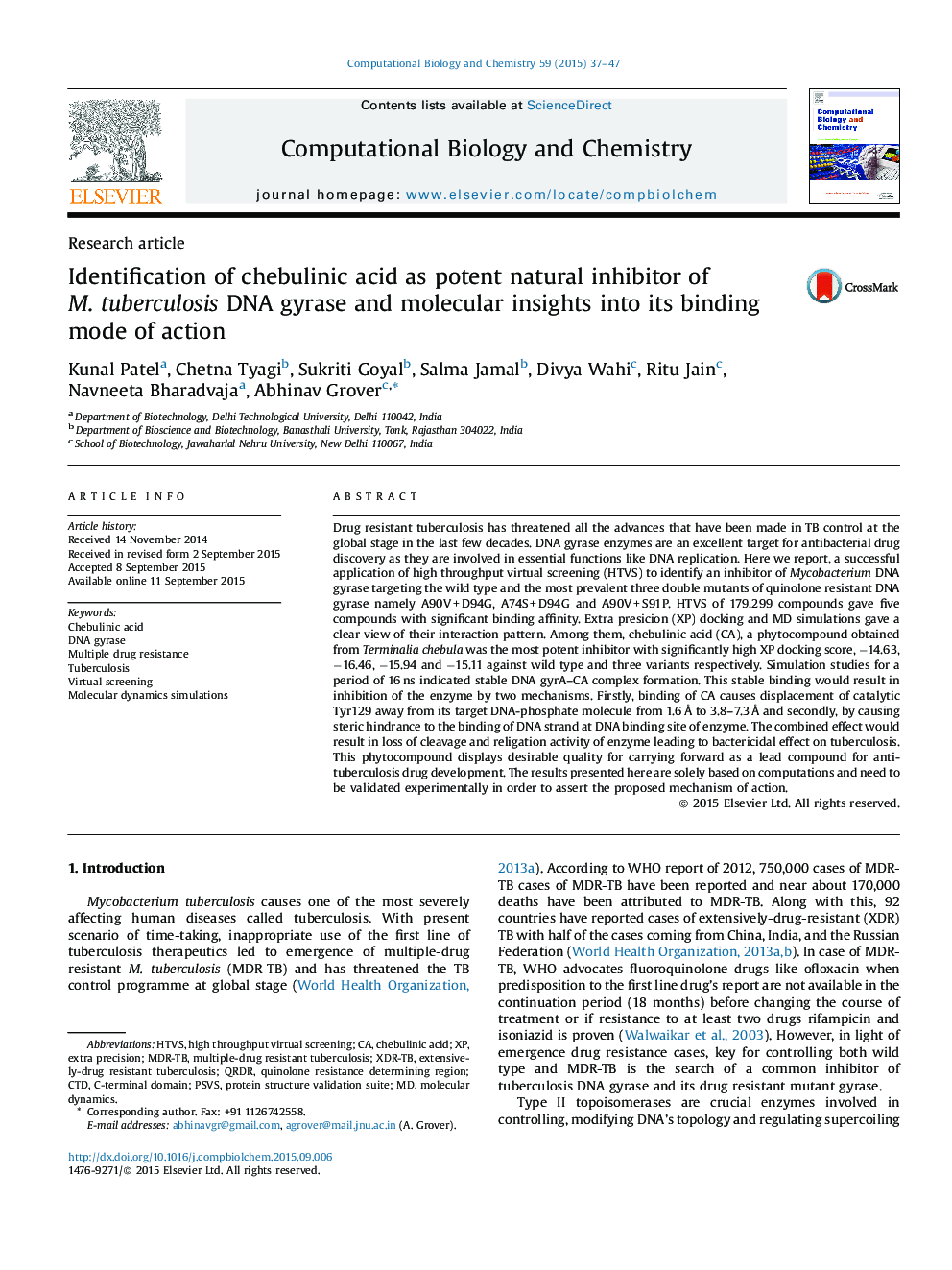| کد مقاله | کد نشریه | سال انتشار | مقاله انگلیسی | نسخه تمام متن |
|---|---|---|---|---|
| 14970 | 1365 | 2015 | 11 صفحه PDF | دانلود رایگان |

• Checking multiple and extensively drug resistant TB by targeting wild type and three mutant variants of DNA gyrase.
• After exhaustive screening of natural compounds, one compound namely, chebulinic acid (CA) was identified as active against all 4 variants.
• Molecular dynamics revealed binding stability of CA with DNA gyrase chain A.
• Two mechanisms are proposed for its antibacterial activity: displacement of crucial residue and steric hindrance due to DNA binding.
Drug resistant tuberculosis has threatened all the advances that have been made in TB control at the global stage in the last few decades. DNA gyrase enzymes are an excellent target for antibacterial drug discovery as they are involved in essential functions like DNA replication. Here we report, a successful application of high throughput virtual screening (HTVS) to identify an inhibitor of Mycobacterium DNA gyrase targeting the wild type and the most prevalent three double mutants of quinolone resistant DNA gyrase namely A90V + D94G, A74S + D94G and A90V + S91P. HTVS of 179.299 compounds gave five compounds with significant binding affinity. Extra presicion (XP) docking and MD simulations gave a clear view of their interaction pattern. Among them, chebulinic acid (CA), a phytocompound obtained from Terminalia chebula was the most potent inhibitor with significantly high XP docking score, −14.63, −16.46, −15.94 and −15.11 against wild type and three variants respectively. Simulation studies for a period of 16 ns indicated stable DNA gyrA–CA complex formation. This stable binding would result in inhibition of the enzyme by two mechanisms. Firstly, binding of CA causes displacement of catalytic Tyr129 away from its target DNA-phosphate molecule from 1.6 Å to 3.8–7.3 Å and secondly, by causing steric hindrance to the binding of DNA strand at DNA binding site of enzyme. The combined effect would result in loss of cleavage and religation activity of enzyme leading to bactericidal effect on tuberculosis. This phytocompound displays desirable quality for carrying forward as a lead compound for anti-tuberculosis drug development. The results presented here are solely based on computations and need to be validated experimentally in order to assert the proposed mechanism of action.
Figure optionsDownload as PowerPoint slide
Journal: Computational Biology and Chemistry - Volume 59, Part A, December 2015, Pages 37–47